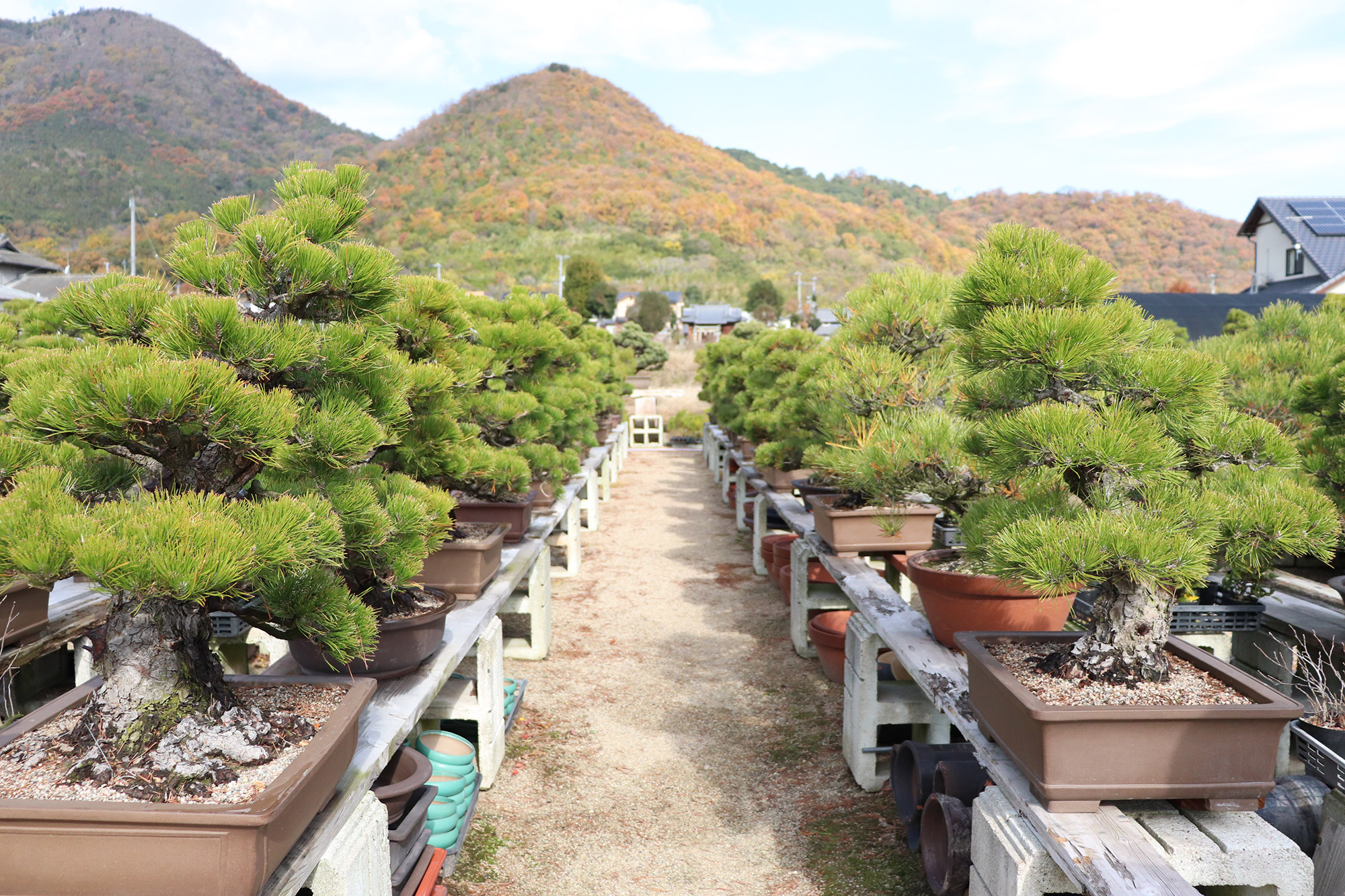A row of black pine bonsai grown from the stage of sashiki (cutting) or tsugiki (grafting) Mashimaen
The bonsai garden established by a single generation
Mashimaen opened when it branched off from the head family in 1971, when MASHIMA Takeshi was 23 years old.
From the head family, he inherited bonsai including black pines and nishiki matsu. Many of the ones on his shelves were made by MASHIMA since they were still seedlings.


Recently, MASHIMA’s garden has had more customers from Taiwan, Europe and other overseas countries. It is a common practice that bonsai gardens introduce each other to a customer upon request. In the past, large black pine bonsais were preferred. Today, many different species of trees are in demand. Mashimaen has more species to enjoy flowers and berries, such as chojubai plums and cape jasmine.



Pattern it two years after grafting
MASHIMA has obtained more zuiho, high-quality black pines, through grafting. Grafting starts from raising black pine into two-year-old seedlings that later serve as the stock. Hogi or the scion of the species to be added is connected to the root of the stock that will be cut once the scion grows.

Two years after grafting, the stem of the small pine had already been wired.
“Wiring is referred to as patterning.”
According to the owner, one advantage of raising a tree from the seedling stage is that you can grow it any way you envision.

Each year’s accumulated efforts lead to technical improvements
In early winter, hasuguri is performed before wiring. Hasuguri is adjusting the quantity of leaves while checking the strength of a tree. It also has the role of better catching the sun and improving ventilation. At the center of a leaf is a bud that is also referred to as a candle. If the bud is large, remove many leaves. If the bud is small, keep many of the leaves intact.
The size of the bud is closely connected to a practice called mekiri, a bonsai technique of trimming leaves that is typically performed in spring. Mekiri weakens a tree. The strength of the tree is checked in accordance with the size of the bud while the quantity of leaves is adjusted.

Note when and how much of the bud has been cut as well as how it grows. Then, decide when and how the bud will be cut in the following year. Years of trial and error form a technique.
“If you have engaged in bonsai for many years, you can talk with a tree and see what it wants you to do,” said MASHIMA. He usually carries on dialogues with bonsai that have grown for 40 to 50 years after undergoing cutting and grafting.
Mashimaen

- ADDRESS
- 2433-2 Nii, Kokubunji-cho, Takamatsu City, Kagawa Prefecture
- TEL
- +81-87-874-3530

